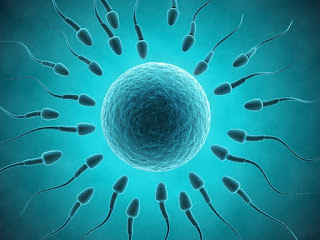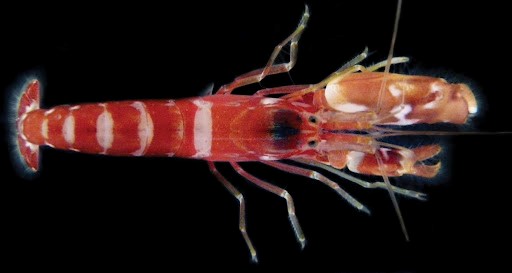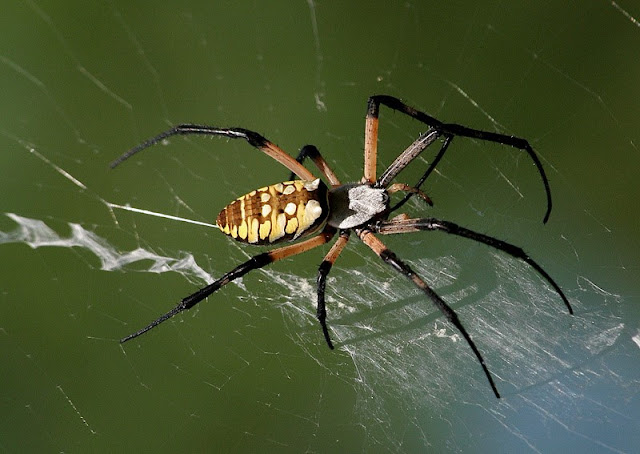Eggs Control Fertilization by Choosing Compatible Sperm
Egg
and Sperm. Photo Credit: Ronald Megiddo
What is this autonomous egg system and how did it come
about?
Humans spend a considerable amount of time and energy
choosing their partners, especially compared to our relatives in other living
kingdoms. Evolutionarily however, our mating techniques originated in the
ocean. For fertilization, our marine microscopic ancestors and their present-day predecessors released
massive clouds of free-floating eggs and sperm into the ocean. These events,
aptly called broadcast
spawning, allow both marine invertebrates and vertebrates the potential for
offspring, even when the proper partners are far away. For eggs and sperm to
find one another would be seemingly impossible, and a great feat of random chance.
Today however, a series of mutations provide instructions for gamete meet-and-greets.
Modern free-floating eggs release chemical signals (like scents) to attract
sperm. Since adults are unable to express pre-ejaculatory partner choices, females
must rely on chemical variants (called chemoattractants) to assist with their
blind dates. Sperm chemoattraction (in which eggs use chemicals to lure sperm to/away
from them) allow eggs to preferentially recruit sperm from specific, and
potentially more compatible males. In marine organisms, chemoattractants
increase fertilization rates by raising the effective target sizes of gametes,
maintaining species barriers through preferences for conspecific sperm, and allow
for gamete-mediated mate
choices.
We’ve established that chemical signaling (chemotaxis)
greatly increases the efficacy of finding compatible gametes and consequent
fertilization, but...
How do chemoattractants work?
In marine invertebrates, chemoattractants
preferentially recruit sperm from specific, and usually more compatible, mates
by remotely changing sperm swimming movements and behaviors. Sperm that are
compatible with the egg have an easier time approaching it, as opposed to those
that are not compatible. The egg thereby increases fertilization rates, embryo
viability, and offspring survival, even in the absence of its parent.
It turns out that this process, although intended for
the open ocean, persists in animals that rely on internal fertilization (including
mammals that undergo fertilization in a uterus). In mice for instance, eggs are preferentially
fertilized by sperm that are genetically unrelated to the female. Mammalian chemoattractants
can even influence perceived mating capability by maximizing genomic compatibility
between mates, selecting ideal genes, reinforcing partner decisions,
and even by overriding pre-mate
choices.
Do chemoattractants affect human mating?
In humans, mate choice continues after sexual activity
through communication between the female reproductive system and the sperm. Like
the chemotaxis utilized by our marine ancestors, females bias the sperm that
they use, exerting a cryptic choice for on males during the paternity process. Current
research suggests that human sperm are influenced by the chemical makeup of the
follicular fluid surrounding the egg (which likely contains
progesterone and perhaps other hormones). The chemical attractants, found in
the follicular fluid, appear to favor specific sperm from distinct males. Under
experimental conditions, IVF (in-vitro fertilization) patients’ sperm and eggs
showed clear and repeated preference for certain partner pairings over others. In
the presence of sperm from multiple males, one female’s follicular fluid consistently
attracted sperm from one specific male, even when the egg was exposed to sperm
from multiple males.
Imagine a series of females and males. For the sake of
the example, we’ll give each a name and a color.
Females: Sally
(yellow), Rita (blue), Lucy (green), Ellen (red)
Males: Harry
(yellow), Tom (blue), Ricky (green), Adam (red)
In a race against Harry, Tom, and Adam’s sperm, Ricky’s sperm reach Lucy’s egg fastest and with the highest frequency. Ricky’s sperm are effective after all.
In the final combination, Adam’s sperm are closest to fertilizing Ellen’s egg. By now, it’s no surprise that different eggs pair well with different sperm. Continuing this pattern in petri dishes yields the following:
In our examples, the sperm and egg colors conveniently
mirrored one another. In experimental conditions however, a different quality
determines sperm-egg interactions.
Sperm swim preferentially
towards their partner’s eggs most of the time, so long as the couple’s gametes are
genetically compatible for immune defense.
To determine how human sperm know where to go, scientists
took a hint from our marine ancestors. They examined the egg, sperm, and
surrounding materials to determine if signals could get from one gamete to the
next.
What caused this variation and how can we explain it?
In each egg scenario, the favorable sperm owner
changed. All sperm were capable of reaching the egg, but each male’s gametes
functioned best with a different egg. The egg, therefore, must change how sperm
perform and behave using follicular fluid. It turns out that follicular fluid (darkest
ring around the egg in the diagrams), doesn’t solely attract sperm, but
actually chemically chooses which sperm to attract (and which to avoid). It is
unclear however, how the egg exerts this power. Perhaps the follicular fluid
alters the swimming physiology and behavior of human sperm, as it does in
marine invertebrates. More research is needed to determine the mechanisms
behind cryptic female choice.
Are there implications for humans?
The egg’s ability to exert post-mating sexual
selection is a novel idea, but chemosensory-driven gamete interactions likely
span the animal tree of life, providing widespread and autonomous egg-mediated
mate choice (25 years of evidence in humans). Current research
extends the traditional view that chemoattraction is solely responsible for
increasing egg-sperm interactions in humans, instead highlighting a penultimate
post-mating sexual selection strategy.
In IVF patients, the egg-attracted sperm, and
consequent female-male interactive effects, raised the compatibility of genomic
compatibility and fertilization. Sperm swim preferentially towards their
partner’s follicular fluid most of the time, reflecting that the couple’s gametes
were genetically compatible for immune defense (at the major histocompatibility
complex (MHC)), although this assumption remains controversial.
When sperm got lost or unsuccessfully made it to the
follicular fluid surrounding the egg, the egg and sperm donors often exhibited
similar genetic information, a perfectly common companion trait, but a biological
no-no for mating. Alternatively, in some infertility cases, lost sperm may be
explained by a lack of chemical signaling or receival by the gametes. If the
signal is not produced or if the signal cannot be received, the sperm and egg
will not meet, regardless of genetic compatibility.
In the absence of a single comprehensive rationale, scientists
need more information. Study into female-male interactive effects and the
mechanisms between gamete chemical communication will assist in clarifying what
influences sperm grouping in the follicular fluid. Such advances may aid in the
development of new diagnosis and treatment of unexplained infertility, increased
efficacy and safety of assisted reproductive treatments, and more accurate assessments
of genomic compatibility in potential mates. The medical community is expected
to weigh in on the bioethical implications of such procedures and their
implications.
Are eggs truly autonomous? Is judging
genetic compatibility ethical? What would you do with these findings? What
should I write about next?
Leave your answers in the comments section
below. Spread the conversation by sharing, if you like.
© 2020 Sabrina L. Groves. Creative Commons Attribution-Noncommercial 4.0 International License.









Comments
Post a Comment